An effective lookout could be a split-second observation between a safe scenic flight and a missed potential hazard.
Picture this: you’re cruising through the boundless expanse of the sky. At first glance, the horizon appears scenic and empty compared to the ant trails of cars below.
However, there’s a cast of characters vying for your attention – from local traffic to drones, birds and the terrain lurking below those fluffy clouds – and each poses different challenges.
Regardless of flying experience, how can you fill your knowledge gaps and sharpen your lookout skills? That’s important because every flight hinges on the sharpness of a pilot’s eyes and their ability to scan the skies effectively.
Know your equipment: the eyeball
In the sky, our eyes act as camera lenses, snapping a wide-angle shot of about 200 degrees. But here’s the twist: the zone of intense focus is just 10–15 degrees. When light enters our eyes, it bends through the cornea and lens, creating a visual masterpiece on our retinas. Tiny cells (rods and cones) in the retina act like messengers, turning that light into signals, sent to the brain via the optic nerve. The brain puts the puzzle pieces together, allowing us to see shapes, colours and depth, painting the world around us.
Rods excel in low-light conditions, aiding night vision. Cones specialise in perceiving colour, finer details (like aeroplane spotting) and more rapid changes in imagery. Meanwhile, our peripheral vision helps track motion but doesn’t pick up fine details or colours.
So, when life (or ATC) throws a curveball, like a stressful situation or circumstance, your eyes pull a trick on your mind called tunnel vision. Your brain narrows its focus to the essentials like decision-making and motor skills, at the expense of broader situational awareness. Unfortunately, we don’t want tunnel vision all the time, so learning how to manage it to be able to keep a proper lookout matters.
Optical tricks and truths
Optical and sensory illusions are genuine limitations and require heightened awareness. Being mindful of their existence enables you to proactively anticipate potential threats, allowing you to have a more informed and safe approach to flying.
- Haze and glare: During daylight, atmospheric haze and glare from the sun can create illusions, making objects appear closer or larger than they are. Misjudging distances and relative sizes of objects, runways and terrain is easy to do, as is accurately assessing the proximity of other aircraft.
- Undulating terrain: The play of shadows on uneven terrain can create the illusion of changes in altitude or slope. These optical tricks can lead to incorrect adjustments in altitude and course.
- False horizons: Poor visibility of references to the natural horizon can create false horizons, especially over featureless terrain or water. You may struggle to distinguish between the actual horizon and false references, potentially affecting attitude control. An optical illusion known as empty-field myopia can also occur in these situations and at high altitudes where there’s not much for the eyes to focus on. The input from your brain and eyes will tell you that oncoming traffic isn’t there.
- Fog: This reduces visibility, making objects appear closer than they appear due to high moisture content in fog, which causes light to refract differently. The scattering and diffusion of light in fog can distort shapes, sizes, and contrasts.
- Water refraction: When rain hits the windshield, it can deceive you into perceiving a higher altitude, as the horizon appears lower than its actual position. Consequently, this could result in a lower approach.
- Autokinesis: Without visual references, a stationary light source located on the ground amid dark surroundings may appear to move. This autokinetic effect can lead to disorientation, making it challenging for pilots to gauge the position of other aircraft or lights accurately.
- Ground lighting: At night, reduced ambient light can hinder accurate perception of an object’s size and distance. In low-light conditions, extended linear lights, like those from a road, might be misconstrued as a runway. The brilliance of runway lights can create a deceptive sense of proximity, leading pilots to initiate a higher-than-normal approach and flare unintentionally.
If you spot traffic that isn’t moving across your windshield but is getting bigger, that’s a red flag screaming, ‘Collision ahead!’
Six strategies for vigilance
1. Visual scanning techniques
Short, frequent eye movements is a good method for effective scanning. Think of your eyes as taking strategic snapshots, shifting through different parts of the sky. Each eye movement should cover just 10 degrees, making sure you optimise scanning for the section of sky you’re looking at.
Every sector should be scanned for at least one second. This provides adequate time to conduct necessary airspace surveillance in that particular area of the sky.
Andrew Scheiffers, Chief Flying Instructor at Learn2fly Canberra, says, ‘We teach the ALAP (attitude, lookout, attitude, performance) work cycle, which cements the amount of time spent looking outside and prevents students from staring aimlessly.
‘Our 2-day ground school covers a range of topics before commencing practical flying training and includes a ground briefing on the techniques used for scanning and lookout. The training manual also provides the scan technique and highlights the importance of keeping their head out of the cockpit.’
The ALAP work cycle emphasises a systematic and thorough approach to flight, integrating attitude control, situational awareness through lookout and performance assessment.
- Attitude: check and adjust the aircraft’s attitude concerning the horizon. Establish a consistent attitude for predictable performance.
- Lookout: shift attention to scanning the surrounding airspace for potential hazards, obstacles, or other aircraft. This phase emphasises maintaining situational awareness and avoiding collisions.
- Attitude (again): return your focus to the aircraft’s attitude, ensuring it aligns with the desired parameters. This step reinforces stable flight conditions and control.
- Performance: evaluate and confirm the aircraft’s performance and consider the known power setting and established attitude.
2. You want 20/20 vision
Keeping those peepers in top shape is crucial for a pilot’s lookout. Regular eye check-ups, enough shut-eye, and shielding your eyes from the sun’s harsh glare – these are your secret weapons. And those cool non-polarised sunnies? They’re not just for the ‘gram – they’re protecting your visual sharpness, especially when it’s all sunshine and blue skies.
If you have prescription glasses, keep a spare set with you. If you’re not sure you need prescription glasses, have your eyes tested. It’s amazing what you can spot when you’ve got vision support.
3. Get your beauty sleep
In many industries, working long hours without sleep is glorified under, ‘getting the job done’, However, as an aviator, if you skip your sleep, you impair your physical and cognitive functioning.
Matthew Walker, author of Why We Sleep, says, ‘Being awake for 19 hours (being past your bedtime by 3 hours) is as cognitively impairing as being legally drunk.’
However, even a seemingly minor issue, like a sore neck or back, can impede head movement which can affect your ability to perform a satisfactory lookout. Flying demands require focus, so if you’re preoccupied with physical, emotional, or psychological distractions, you shouldn’t fly.
4. Don’t just wing it; organise your cockpit
Flight planning means less time with your head in the controls. If you’re a licensed pilot, it’s a given that you should be flight planning properly. Check weather forecasts and reports for your route, plan any alternates and perform fuel calculations beforehand. That way, you can deal with in-flight situations because you’re looking outside.
Organisation goes beyond just cockpit tidiness: store equipment in designated compartments and pockets; have what you need accessible and easy to retrieve; neatly folded maps contribute to a focused scanning process.
Scheiffers says, ‘Know your aircraft! From many hours of low-level helicopter flying in the military, I have learnt to prioritise tasks so I can focus on looking outside’.
‘Memorising your checklists, knowing where switches are in your aircraft (blind cockpit drills), adjusting controls or systems without looking at the gauge and then confirming the correct setting, are all key skills to master’.
‘Fit LED lights including strobe, nav and landing lights – and leave them on at all times. LED lights last 20,000 hours or more. I don’t think you are in danger of wearing them out,’ he explains.
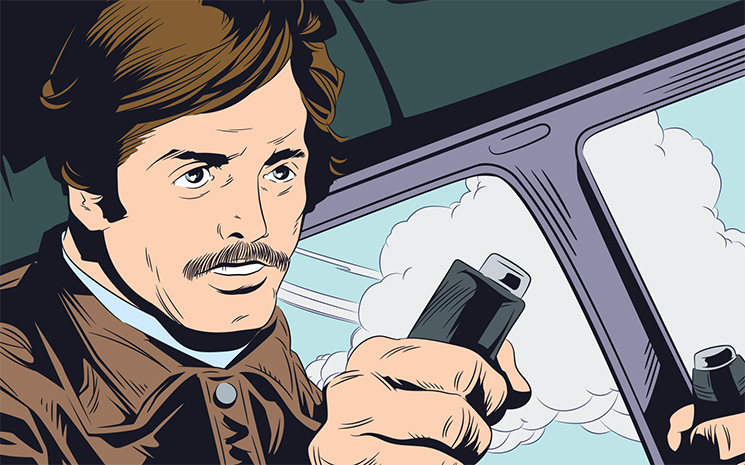
Comfort and visibility go together. If you’re a shorter pilot, a well-placed cushion can give you that extra height if seat adjustment still doesn’t allow you to see properly.
5. Don’t play dirty
Let’s face it – most aircraft turn into high-speed bug smashers once airborne. Those sizeable insect smears and unidentified smudge spots are excellent hiding spots for an approaching aircraft, invisible until it’s dangerously close – and possibly too late. A windshield covered with scratches distorts the pilot’s view further, only exacerbating the issue. A pristine windshield is a crucial safety measure.
A regular wax on, wax off, and upkeep, guarantee a clear sky view. Monitor any pre-existing nicks or scratches during pre-flight inspections. If something needs repairing, make sure it gets done.
6. Elevate your situational swagger
Careful listening to ATC and aircraft radio communications sharpens situational awareness and offers real-time updates on nearby aircraft and air traffic conditions.
Electronic aids like traffic alert systems can complement visual and auditory awareness. However, one of the most common mistakes Scheiffers has observed pilots making is turning off the radio.
‘If you have 2 radios, use them both to maximise situational awareness,’ he says.
‘The radio will help you work out where to look. ADS-B is wonderful, but it doesn’t replace looking outside.
Should you hear the call, ‘2 miles, 3 o’clock high’, lock onto that traffic but resist tunnel vision. Once sighted, don’t fixate; let your gaze dance across the entire sky.
If the traffic is gliding by your windshield, you’re probably not on a collision course. Keep scanning, intermittently checking on your identified traffic and don’t forget to aviate.
Remember, allow your eyes to truly ‘see’ by avoiding continuous movement. Pause, observe, and navigate.
If you are VFR, then ‘see and avoid’ is how you separate from traffic.
Whether you’re a seasoned pilot or a novice, reminding yourself about potential threats and hazards will humble you. A sound visual sweep cannot be overstated.
Non-controlled operations
Non-controlled operations is one of the special topics on our Pilot safety hub.

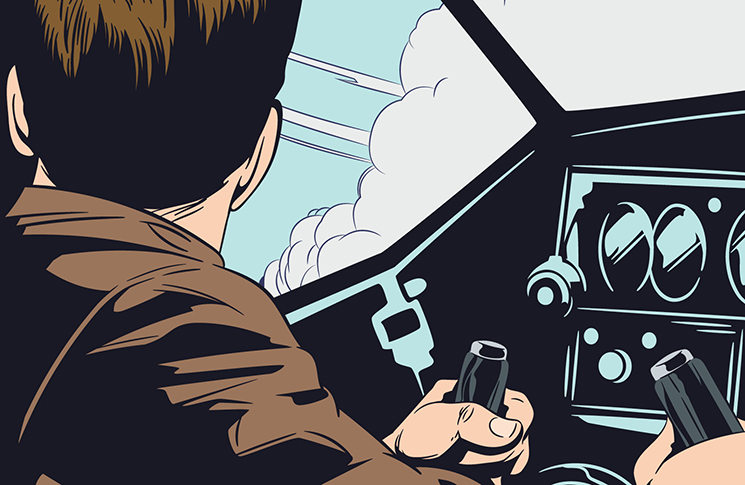
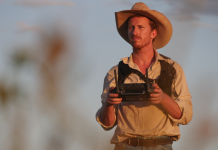
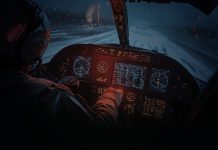
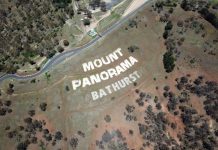

Comments are closed.